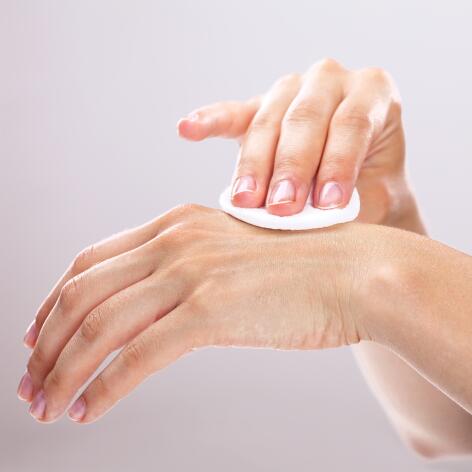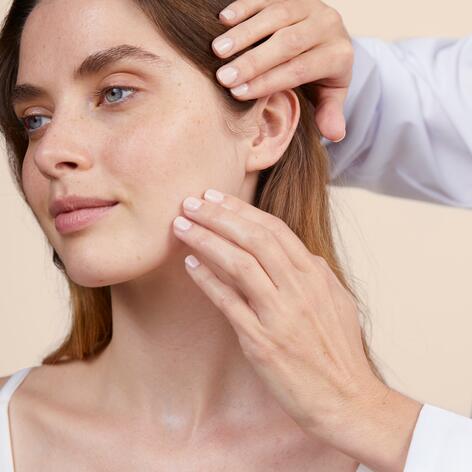Protect your skin from the side effects of cancer treatments
Anti-cancer treatments are increasingly effective. However, they often have many side effects on the skin: dryness, redness, itching, burning, hair loss, etc. What should you do to care for your skin to reduce these undesirable effects? And what daily hygiene to adopt?
How do cancer treatments impact the skin?
Side effects vary depending on the treatments used, the dosages and the individuals. Radiation, for example, sometimes causes reactions in the skin. After two weeks of treatment, redness, called erythema, may appear on the irradiated area. Targeted therapy and immunotherapy drugs can cause itching, dryness or rashes. Dry skin, hair loss and hair loss are recurrent problems with chemotherapy.


Don't let the side effects of treatment get the better of you
The cutaneous side effects of anti-cancer treatments can be difficult to deal with. They are very frequent, sometimes affecting quality of life, and can even call into question the continuation of the treatment itself. How can you find the courage to continue if your skin burns or itches? Appropriate management, hygiene and gentle care (not forgetting, of course, dialogue with the nursing staff) will help you get through it.
My mother underwent radiation therapy to her chest wall following her breast cancer. Since then she has been complaining of pain and finds that certain areas are swollen. I would like to be able to relieve her pain...
How to limit radiation burns?
Radiodermatitis - skin damage caused by ionizing radiation - is the most common side effect of radiation therapy. To prevent this redness from getting worse, oozing and becoming very painful, you will need to act quickly (and even preventively). The main things to do are to apply thermal water compresses and moisturize after radiation therapy.
Preventing your skin from burning during and after radiation therapy
Soulagez les démangeaisons
Pruritus, or itching, is most often related to chemotherapy treatments, targeted therapies and the inflammation they can cause. Rest assured, the urge to scratch usually goes away once the treatment is over. In the meantime, you'd like some help soothing your skin. Simple things like cleansing your skin with a replenishing cleansing oil, applying a daily emollient and applying thermal water compresses are great ways to help.
Relieving itching during cancer treatment


Take care of your scalp
Another effect of chemotherapy is alopecia - hair loss. Your scalp may become sensitive and/or painful before or during the period of hair loss. A word of advice: don't wait for dryness or itching to occur before moisturizing your scalp daily, do it as a preventive measure and protect it from the sun with a photo-protective fluid SPF 50+.
Chemotherapy also thins and weakens hair, which may become more brittle than usual. You'll need to protect your hair by washing it with warm water, a small amount of mild shampoo for sensitive scalps and letting it air dry.
Taking care of your scalp during and after chemotherapy
FRIENDLY (AND EXPERT) ADVICE
Your skin has become more sensitive than usual. To cleanse it, choose soap-free dermatological bars or cleansing oils that supercharge and soothe the skin and respect its pH. Do not use washcloths, sponges or shower flowers which can irritate sensitive skin. To dry yourself, avoid rubbing, it is better to dab delicately.
During treatment, keep an eye on your hands and feet
Some cancer treatments weaken the small blood vessels in the skin of the hands and feet. Some chemotherapies can cause hand-foot syndrome (or palmoplantar erythrodysesthesia in medical language). This can lead to redness, dryness, cracks and pain in the areas where the feet rest... It is therefore important to moisturize the soles of the feet and the palms of the hands from the start of treatment. And don't forget the health of your nails, which are also exposed. We tell you everything.
Taking care of your hands and feet during cancer treatment


When treatments cause pimples
Some targeted therapies can cause a rash and redness similar to a strong acne outbreak, especially in the first few weeks of treatment. The areas most rich in sebaceous glands are affected: face, scalp, back, chest. This situation necessarily affects the quality of life. As soon as the first pimples and redness appear, you can limit the risk of bacterial proliferation with a repairing and protective cream based on copper-zinc. If necessary, a cream or a lipid-replenishing balm will soothe your skin.
Soothe acne-like breakouts during cancer treatment
Our answers to your questions
Sorting out the real from the fake: that's what we're here for
It's true. With certain treatments (certain targeted therapy molecules and chemotherapy) your skin can become more sensitive to UV rays. It is important to limit sun exposure, wear covering clothing and protect yourself with a sun protection factor 50+.
This is not true. Even if you feel that the heat soothes you, this effect is only temporary. It actually increases skin dryness and reactivates skin irritation. Instead, choose a shower at a temperature between 32 and 34°.
True and false. With some molecules, it is inevitable. On the other hand, certain parameters such as the dose, the rate of administration and individual susceptibility can limit this fall. The use of a cooling helmet also helps prevent alopecia.
Our solutions for your skin during cancer treatment
Our solutions for your skin during cancer treatment
With its creamy, ultra-nutritious and comforting texture, the balm immediately calms and durably controls the hyper-reactivity of the skin.
NEWSLETTER
Always there for you skin!
All our advice to take care of it daily.

Which skin care routine should you adopt?
Identify what it really needs with the help of our experts and discover the most suitable skin care routine for you.
